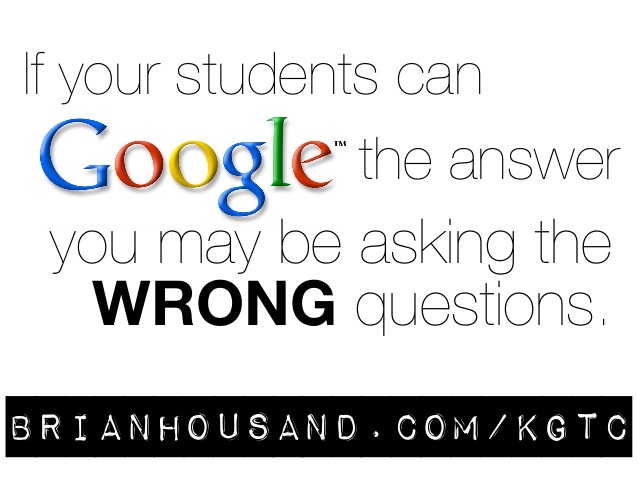Cheating in Online Courses
How do you prevent students from cheating in an online course? We come across a number of posts every week discussing strategies, explaining how students can google answers to multiple choice tests, pay other people to act as them during an online exam and even write papers for them.
When instructors don’t see or hear students during a course, the ability to cheat increases dramatically. Others have come to this same conclusion, but the solutions they promote involve various strategies previously found in books by George Orwell. These strategies usually involve 360 degree webcam monitoring, locking down student browsers, and other ideas born from a dystopian view of education. These ideas are based on flawed assumptions about course and assessment design that may have been true ten years ago but no longer apply today.
Assumption 1: Courses are either face-to-face, human exchanges or online and impersonal correspondences.
Assumption 2: Auto-graded, short answer tests and written papers are the centerpieces of online assessment.
These assumptions may have been true when universities first started their online programs, but now they are relics of the limits imposed by technology decades ago. Technology has changed since the era of the correspondence course, but our mindsets haven’t caught up to these changes.
De-bunking Assumption #1
Most of these academic dishonesty issues arise from anonymity and impersonal course design. In a face-to-face course, student comments are not anonymous and impersonal, but in online correspondence they can be. With VoiceThread, courses can be both online and face-to-face. When students are required to speak up and express their opinions, apply their knowledge, and literally discuss course content instead of typing on a text-based message board, anonymity goes away. Students who cheat in an online course rely on the fact that their instructor doesn’t know their point of view, their style of communicating ideas or their personality. If you are just a student ID on a course roster, it’s easy to copy/paste answers or find someone to type original answers for you in exchange for money. To accomplish this type of cheating in a VoiceThread based course, that student would need to find a look-a-like who had the time to participate and engage in class discussions throughout the semester.
De-bunking Assumption #2
There is nothing intrinsically wrong with short-answer tests or long-form research papers, but they also don’t need to be impersonal and exclusively text-based. When an instructor creates a short-answer test with VoiceThread, they can ask follow-up questions, explore and examine student comments and genuinely assess their understanding. VoiceThread empowers instructors to create assessments that are Google-proof through the use of authentic, human dialogue. Basic facts are the foundation of all higher-order thinking, so knowledge of these facts can be assessed through questions requiring application and synthesis. If a student can Google an answer, the question wasn’t assessing understanding in the first place. In a traditional class, students can cram and temporarily memorize facts which subverts the learning goals the same way Googling an answer does.
Students can only use a paper-writing service when they are being evaluated solely on the final product. If the instructor never sees the previous drafts, never discusses changes, never probes the evolving concepts with the student, ghost writers have an opportunity to thrive. When students plan, create, and revise over time in a transparent environment like VoiceThread, ghost writers are excluded from the conversation.
The age of the correspondence course is over. Online courses in this decade can be human, relationship-oriented learning experiences and VoiceThread can help.

